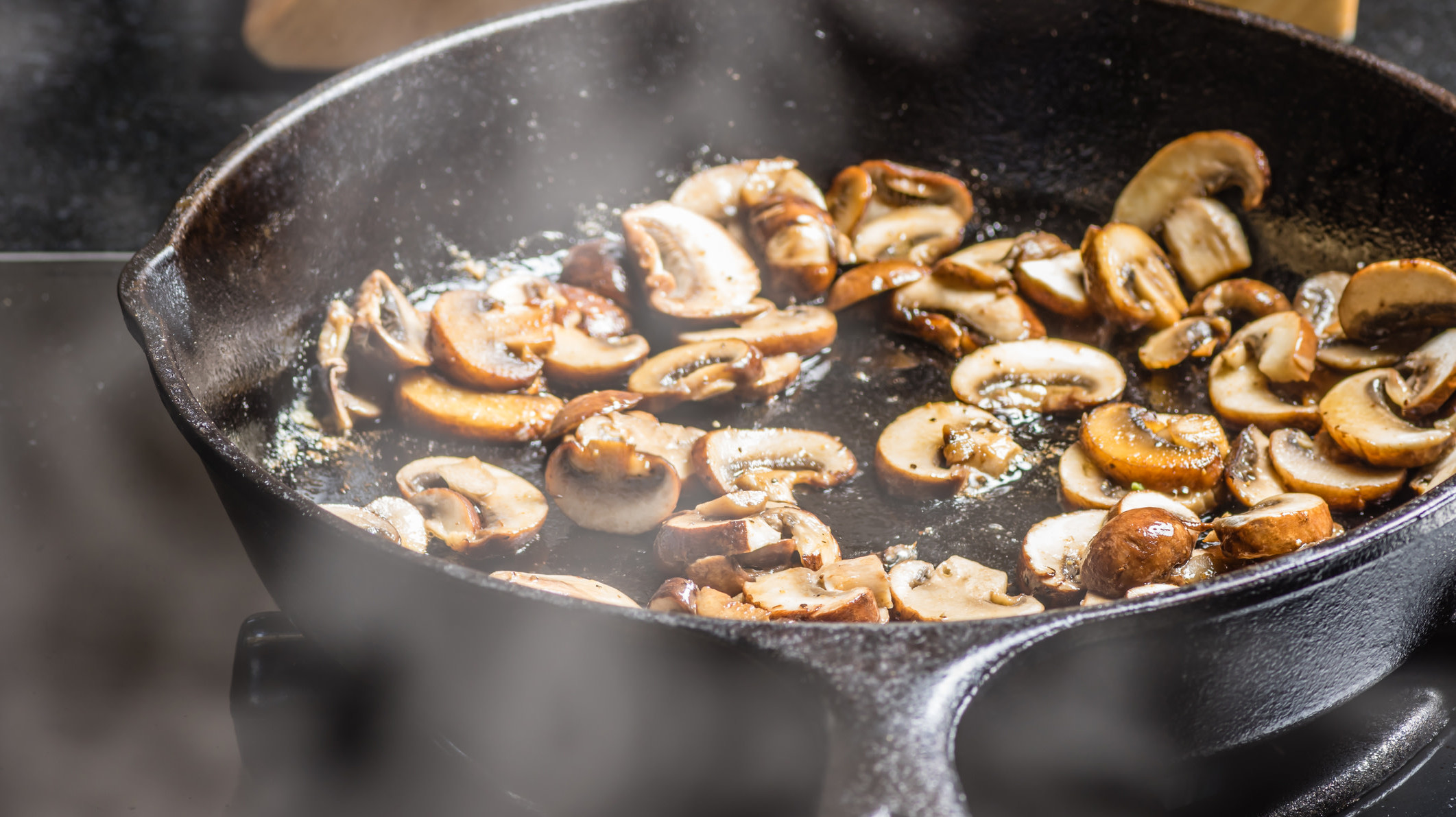Here's The Very Best Way To Sauté Mushrooms
I love sautéed mushrooms so much (I would marry them if I could, but that's "not legal" and they "only like me as a friend"), and yet I have been cooking them wrong my entire life. Mushrooms are porous, spongy little buggers, and I'd been taught that to prevent them from becoming soupy, flaccid, and flavorless, they needed to be cooked in an uncrowded, lightning-hot skillet with minimal interference. Water and steam were the enemies of deep caramelization, I was told, and if allowed liquid to pool up in the pan, the mushrooms were doomed! And because I accepted this commonly held kitchen belief, I did not realize that on the road to Flavortown, perfect sautéed mushrooms lie just past the point of soupy, flaccid flavorlessness. Now that I know the truth, I cannot believe I didn't notice it sooner.
I came across this technique in an old issue of Cook's Illustrated while developing a recipe for caramelized mushroom pasta (a certifiably delicious dish). The magazine suggests dropping the old way of doing things in favor of the "if you can't beat 'em, join 'em" approach. Instead of trying to fight the sponginess of mushrooms, give into it. Let those mushrooms get watery. Overcrowd the pan as much as you want. Yes, it will initially look like a nightmare, and your well-honed cooking instincts might begin to rage. But what happens when water boils for an extended period of time? It evaporates. So we can stop overcomplicating the cooking process and trust physics to do its thing.
Here's how you make perfect sautéed mushrooms: first, wash your mushrooms under running water. Next, throw them into a large skillet or wide pot with a big pinch of salt, clamp on a lid, and cook over high heat for about five minutes. Take off the lid, and you'll see your mushrooms have shriveled up and are boiling away in a pool of their own juice. That's fine! Just keep cooking, stirring occasionally, until about 75% of the liquid has evaporated; then, add some butter, olive oil, or another fat you like for sautéing. You know how mushrooms normally suck up all the oil in a pan when they're sautéed the old fashioned way? Well, now they can't, because cooking has wrung them out like sponges and closed up all their pores; by adding the fat now, it will coat the mushrooms without being absorbed, meaning you'll actually end up using a fraction of what you used to cook with.
Once you've added a bit of fat, you can add some minced alliums and/or aromatics (like garlic) if you wish, and then continue cooking the mushrooms until all the liquid is gone, stirring regularly so they don't burn, and lowering the heat if necessary. (If any bits stick to the pan and start burning, add a small bit of water to deglaze, scraping off the brown bits with a wooden spoon.) And there you have it: perfectly caramelized mushrooms with lots of flavor and very little stress. Once again, putting my faith in science has left me handsomely rewarded. (And seriously, go make that pasta.)
